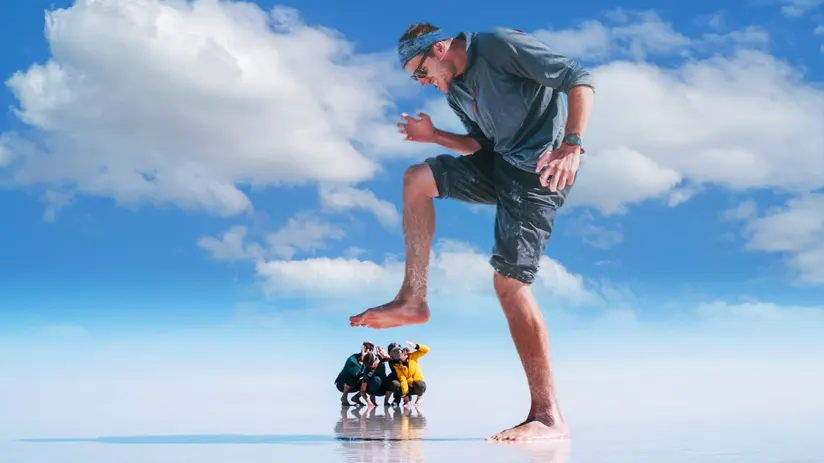Salar de Uyuni, Bolivia’s remarkable salt flat, is the largest in the world and offers a mesmerizing, endless white landscape that mirrors the sky. Spanning over 10,000 square kilometers, its perfectly flat surface creates a stunning, dreamlike effect. If you’re looking for a unique adventure, Machu Travel Peru‘s blog invites you to explore this breathtaking natural wonder.
Get ready for an unforgettable trip to Bolivia! We’re about to begin!
- What is Salar de Uyuni?
- Discovering Salar de Uyuni
- Photography in Uyuni
- Culture and local life
- Useful tips
What is Salar de Uyuni?
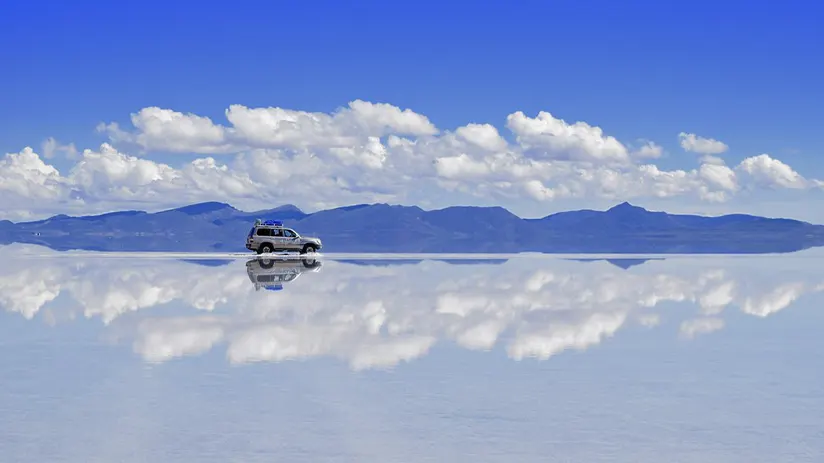
The Uyuni Salt Flat, detailed by geologist François Risacher, is an underground lake covered by a sodium chloride crust. In the rainy season, it becomes a shallow lake with depths of 10 to 30 centimeters. The salt flat features a dry, intricate salt layer known for its rich lithium, potassium, magnesium, and boron deposits. Bolivia is actively working on industrializing these resources, recognizing the salt flat as a crucial “Fiscal Reserve.”
Location
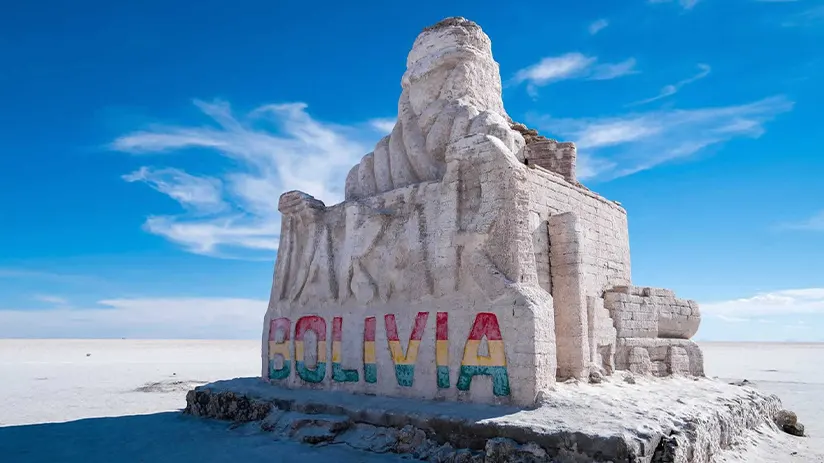
The Salar de Uyuni, located in South America, Bolivia, is the world’s largest salt flat, covering 10,582 square kilometers and 3,653 meters above sea level. It spans across the Oruro and Potosí departments. This expansive salt flat features several small islands, including “The Bell” and Incawasi (House of the Inca).
History
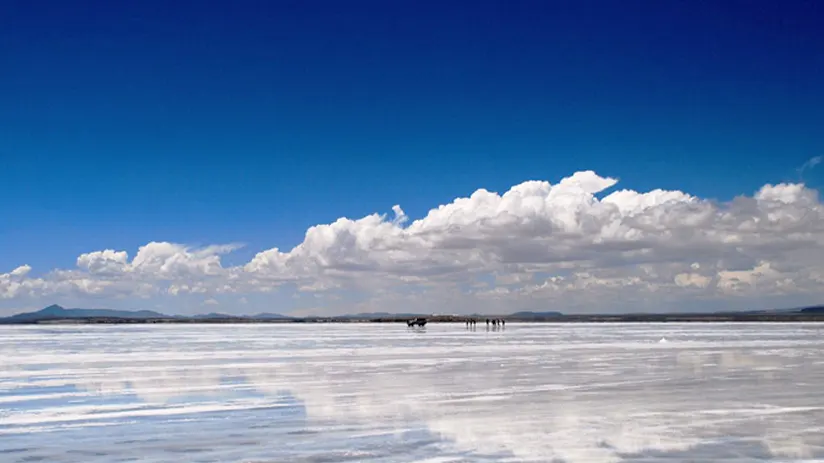
Salar de Uyuni is a vast salt desert flat formed from the evaporation of ancient lakes. It contains about 50% of the world’s lithium reserves, extracted from the salt brine. This region holds significant cultural and spiritual value for local indigenous people, who view it as an integral part of their heritage. Historically, the salt flat has been used for salt extraction, a practice that continues today, though less extensively than in the past.
Weather
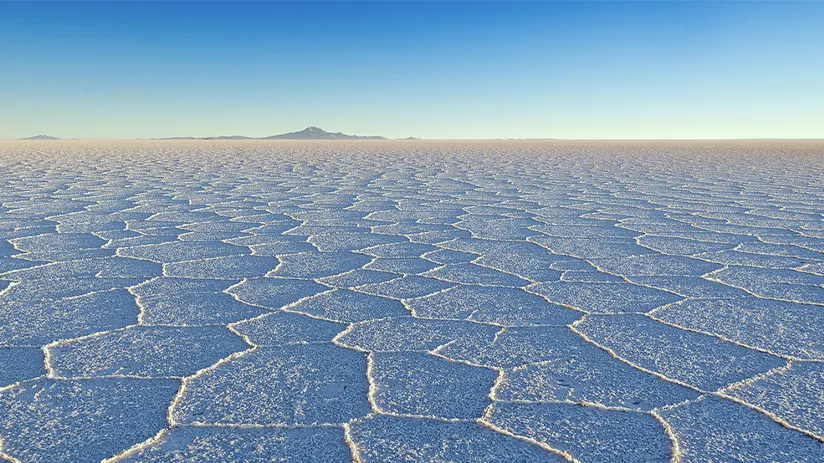
Uyuni, Bolivia experiences distinct weather patterns depending on the season:
- Dry Season (May to October): Characterized by sunny days and minimal rainfall, with daytime temperatures ranging from 15°C to 25°C (59°F to 77°F). Nights can be very cold, often below freezing, and strong afternoon winds are common.
- Wet Season (November to April): This period sees increased rainfall, occasional showers, and thunderstorms. Daytime temperatures are milder, between 15°C and 20°C (59°F to 68°F), while nights remain chilly. The rain creates reflective surfaces on the salt flats, making it an excellent time for photography.
Uyuni’s high altitude (around 3,656 meters or 11,995 feet) means cooler temperatures and potential altitude sickness, so visitors should prepare for varying weather and dress in layers.
Best time to visit
The ideal time to see the mirror effect in the salt flats is from mid-January to the end of March, when the rains that create this visual phenomenon are most common. However, the effect isn’t guaranteed as weather conditions can vary. The Salar can be visited year-round, and after April, you can also explore the Incawasi Island due to more favorable weather.
Discovering Salar de Uyuni
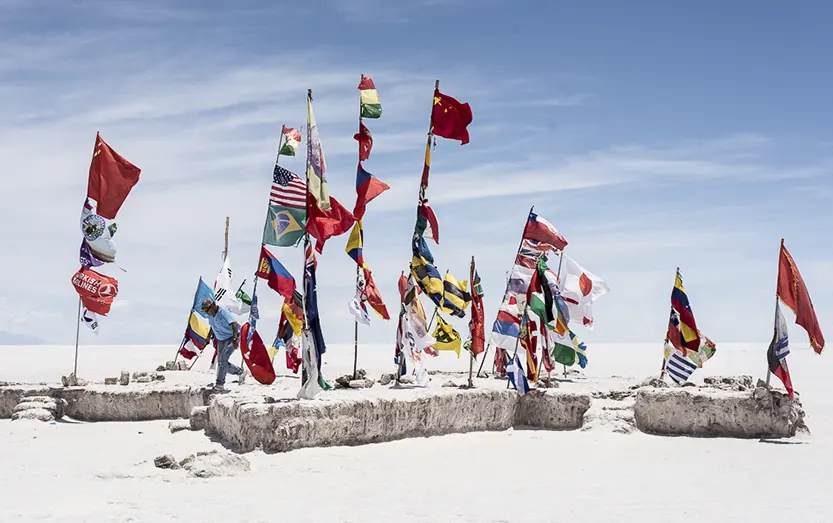
There is much more to the Salar de Uyuni than just a plain salt desert. Hidden islands of ancient cactus, colorful lagoons home to pink flamingos, and audible geysers rising from the earth’s depths can all be found among its enormous stretches. Every turn offers a fresh surprise and a different aspect of this exceptional location’s unparalleled splendor.
When you explore the Salar de Uyuni, you enter a world of contrasts and wonders where nature is shown in all its glory as a symphony of forms and hues. For those who are fortunate enough to experience it, it is a life-changing event that wakes the senses and satisfies the soul, leaving a lasting impression on their hearts.
How to get to Uyuni Salt Flats?
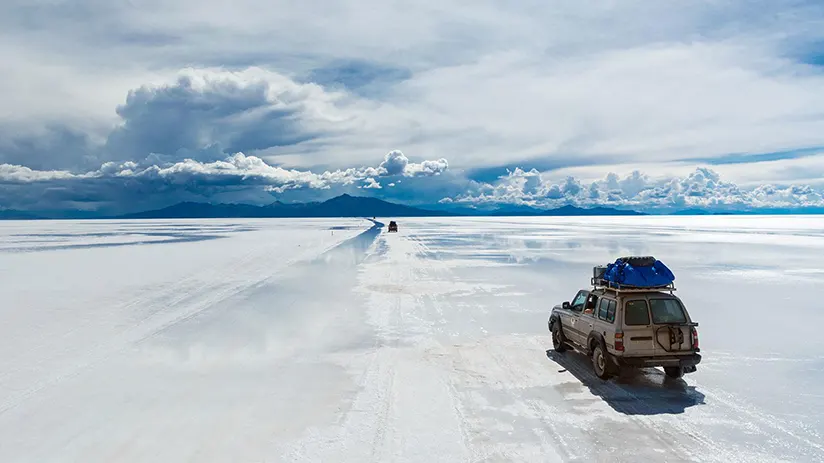
To reach Bolivia’s Salar de Uyuni, the largest salt flat in the world, you have several travel options:
- By Plane: Fly from La Paz to Uyuni’s airport, then arrange a local tour to explore the Salar and nearby sites.
- By Bus: Travel by bus from La Paz to Uyuni, which takes about 8-10 hours, and book a local tour upon arrival.
- By Car: Rent a car in La Paz or Sucre and drive to Uyuni. Road conditions can be challenging, especially during the wet season.
- By Train: Take a train from Oruro to town of Uyuni, then plan your guided tour of the Salar.
Tours and trips
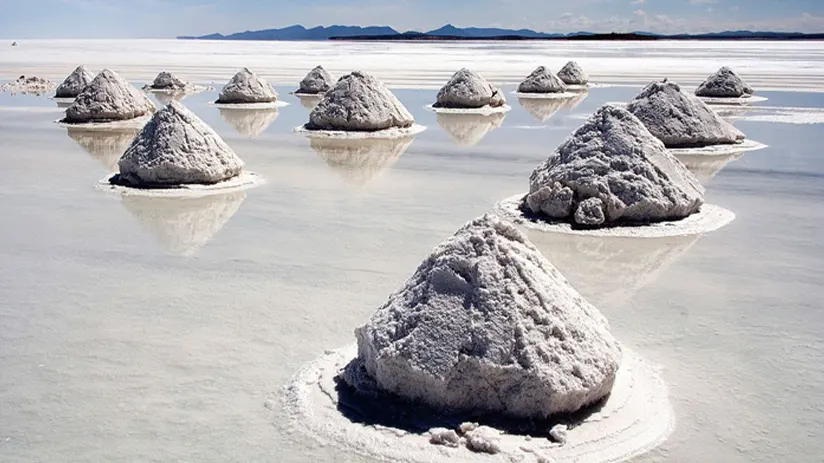
Exploring the Salar de Uyuni offers a range of exciting tours catering to different interests:
| Tour or trip | Description |
| Classic Salar de Uyuni excursions | Typically lasting one to three days, these tours cover the main attractions, including the salt flats, Incahuasi Island with its giant cacti, the Salt Hotel, and stunning sunrise and sunset views. |
| Extended trips | For a more comprehensive experience, four—to five-day trips include sites like Eduardo Avaroa National Park, which features flamingos, geysers, and colorful lagoons. |
| Photography Tours | These specialized tours, also spanning four to five days, focus on capturing the region’s unique landscapes and scenic beauty. |
| Private Tours | The Salar de Uyuni is ideal for stargazing because of its remote location and clear skies. Some tours provide nighttime activities to observe constellations. |
| Stargazing Tours | Given its remote location and clear skies, the Salar de Uyuni is ideal for stargazing. Some tours provide nighttime activities to observe constellations. |
Consider group size, accommodation, and amenities when choosing a tour to ensure a safe and enjoyable experience.
Adventure and activities
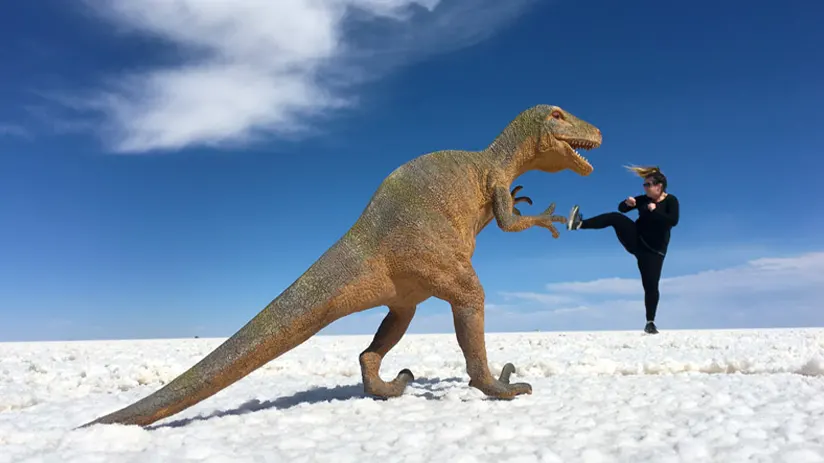
The Uyuni Salt Flats offer a range of unique experiences due to their extraordinary landscape:
- Salar de Uyuni: The world’s largest salt flat, spanning over 10,000 square kilometers. After rainfall, it transforms into a largest mirror that reflects the sky, creating a stunning, surreal landscape.
- Island of Incahuasi: This island in the salt flats features giant cacti and offers panoramic views. Hiking to its top provides breathtaking vistas of the surrounding salt landscape.
- Stargazing: Uyuni’s high altitude and clear, unpolluted skies make it an excellent location for observing stars, planets, and other celestial phenomena.
- Train Cemetery (Cementerio de Trenes): An intriguing site with old, rusted locomotives and train cars, offering insight into Bolivia’s industrial history.
- Flamingo Watching: In Eduardo Avaroa National Park, visitors can see various flamingo species in colorful lagoons, strikingly contrasting the landscape.
- Laguna Colorada: A vibrant red lagoon in the national park, colored by sediments and algae, and a breeding ground for flamingos.
- Hot Springs: Also located within the national park, these mineral-rich hot springs provide a relaxing experience amidst the rugged terrain.
How much does it cost?
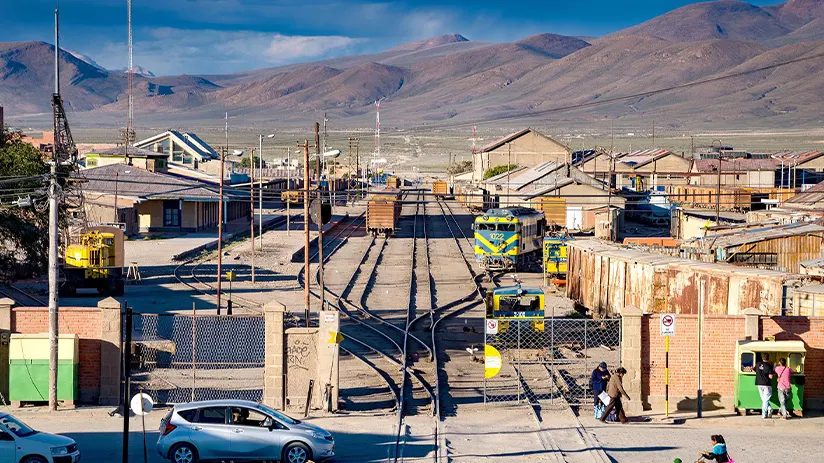
In Uyuni, tour prices for the famous Uyuni Salt Flats vary based on tour length, comfort level, season, and inclusions. Here’s a breakdown of approximate costs:
- Budget Tours: $50-$80 for one day; $100-$200 for multiple days.
- Mid-Range Tours: $80-$120 for one day; $200-$300 for multiple days.
- Luxury Tours: Over $300 for one day; more than $500 for multiple days.
Photography in Uyuni
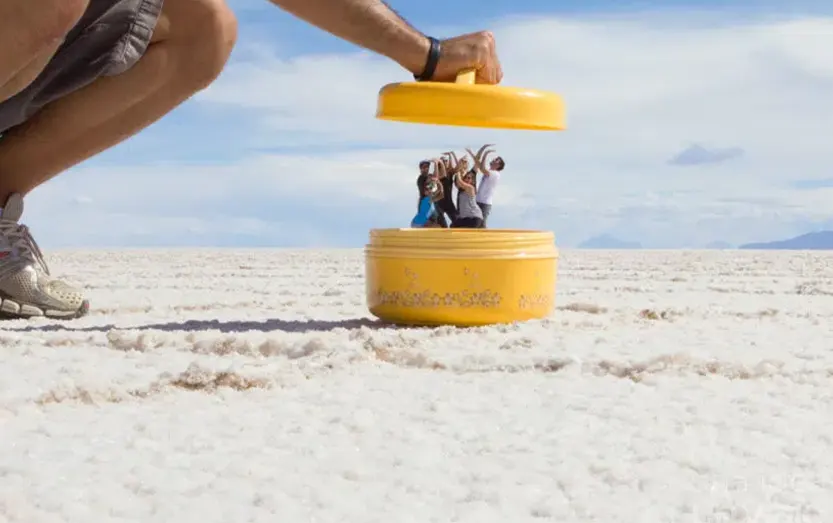
Photography is one of the components you should not forget in the Salar of Uyuni. The incredible landscapes and natural places it houses, are simply majestic. In this sense, visually documenting it can help you remember this journey forever.
Tips for taking good photos
When photographing the Salar de Uyuni, consider these tips for capturing its stunning landscapes:
- Timing: Aim to shoot early in the morning or sunset to make the most of natural light. The reflective water creates striking backgrounds.
- Perspective: Play with perspective to create dynamic images, such as positioning objects or people to manipulate their apparent size and distance.
- Star and Island Shots: Opt for panoramic shots to photograph the night sky or the salt flats’ islands. Capture the Milky Way and consider the composition and colors.
- Weather Variability: Use changing weather conditions, such as clouds and storms, to add drama and variety to your photos.
- Wildlife Respect: If photographing wildlife, avoid disrupting their natural environment. Focus on creative and respectful approaches to capture your subjects.
Ideal places and moments for the best photos
- The salt flat itself
- Isla Incahuasi
- Salt Hotel
- Train Cementery
- Sunset and sunrise
- Flamingos Spot
- Flamingos Soit and The Salt
Culture and local life
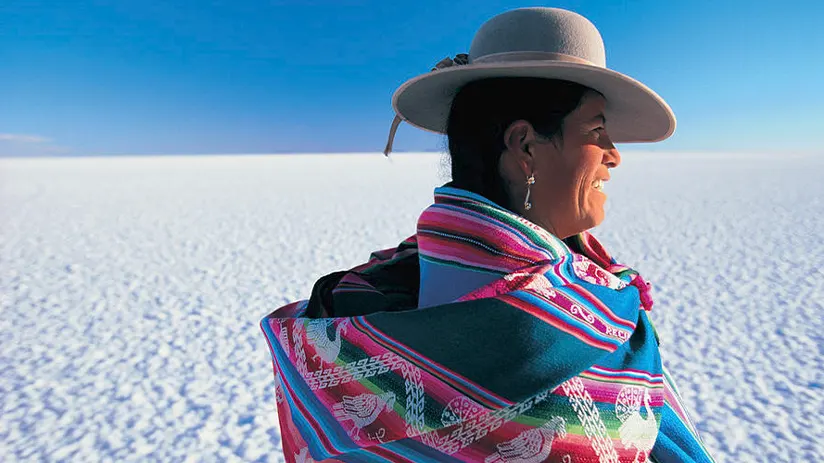
Bolivia, shaped by its indigenous Aymara, Quechua, and Guarani peoples, is a culturally rich country known for its stunning landscapes and vibrant heritage. Key attractions like the Salar de Uyuni make it a popular destination, with tourism benefiting local economies and offering visitors a chance to experience the beauty and culture in the crest of the Andes.
In conclusion, this country offers the best of nature and culture within your reach. Choose the best tour in Bolivia and let yourself be carried away by the magic of the Andes.
Customs and traditions of the region
There is immense cultural and folkloric diversity in Bolivia and Uyuni. This country has been recognized for its festivals and colorful traditions. Likewise, festivals such as the Oruro Carnival and its diverse folkloric dances have caught the attention of tourists and the world.
Likewise, the Bolivian people especially those of Uyuni, maintain their deep-rooted cultural traditions, which stem from the worship and respect for the Pachamama “earth” and the gods such as the sun and the moon. If you wish to learn more about this incredible country, you can check out our Bolivia travel guide, where you’ll find unique and interesting details.
Markets
Bolivia is a culturally diverse country influenced by indigenous groups such as the Aymara, Quechua, and Guarani, who shape its customs, traditions, and arts. A major tourist draw is the Salar de Uyuni, which boosts the local economy. The country is renowned for its breathtaking natural landscapes and rich cultural experiences, particularly in the Andes.
Restaurants
Tika Palace

Located on Avenida Potosí in Uyuni, Bolivia. This restaurant offers a variety of Latin American cuisine, including vegetarian options, and features a pub restaurant. Additionally, it appears to be an ideal place to enjoy a good time through unique flavors and trendy music.
The Hot Spot The New Religion
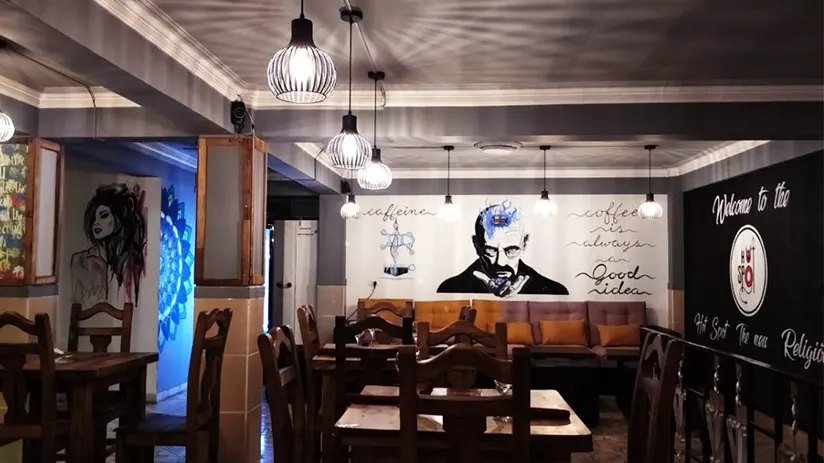
Located on Calle Colón 687, nestled between Santa Cruz and Colombia streets in Uyuni, Bolivia, this restaurant is renowned for its vegetarian cuisine. Flavors and ingredients are meticulously handled with the utmost care and respect, ensuring a delightful experience for discerning palates.
Railway Cafe Bistro
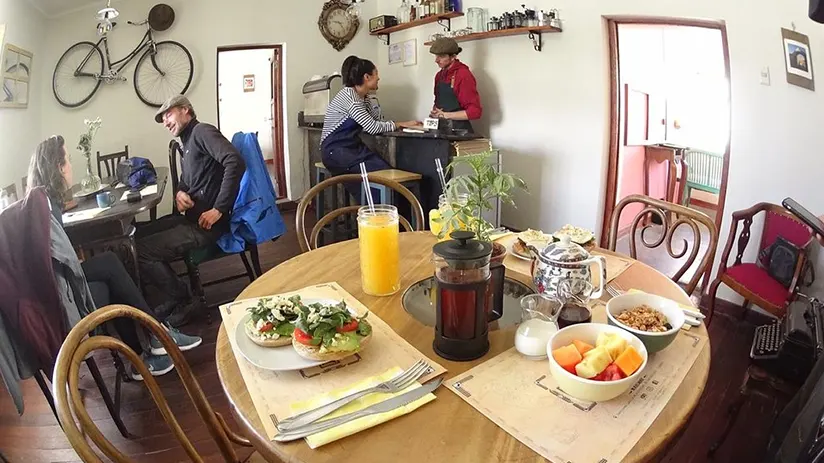
Located on Sucre Esquina Colon Interesection Uyuni, Bolivia. This establishment offers a variety of options for healthy cuisine and craft beer. It seems to be a place where you can enjoy delicious food without regrets, emphasizing a balance of healthiness and indulgence.
Hotels
The hotels in Bolivia offer an incredible and unique experience. If you enjoy combining cultural, natural, and traditional experiences, it’s a must to discover the best hotels and what they offer.
Atix Hotel – La Paz
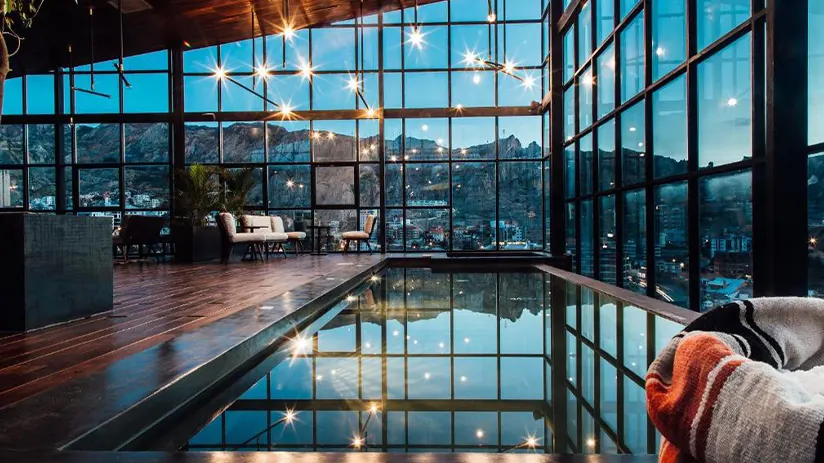
Atix is a boutique hotel on 16th Street of Julino Patiño in La Paz, Bolivia. It offers a luxurious experience while celebrating Bolivia’s cultural heritage. The hotel also features Bar 591, known for its exquisite cocktails and unique ambiance.
La Estancia Ecolodge – Lake Titicaca
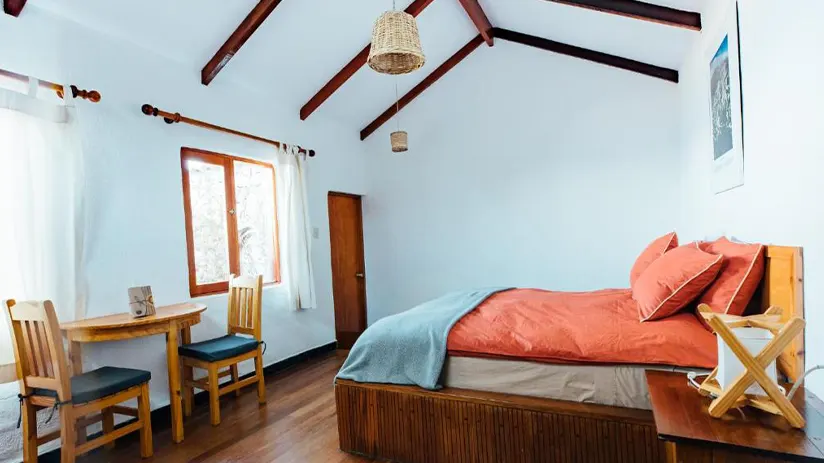
This ecolodge boasts modern amenities and a spiritually comforting ambiance, seamlessly integrating traditional eco-friendly design elements. Located on the shores of Lake Titicaca, it offers a serene retreat for guests.
Luna Salada
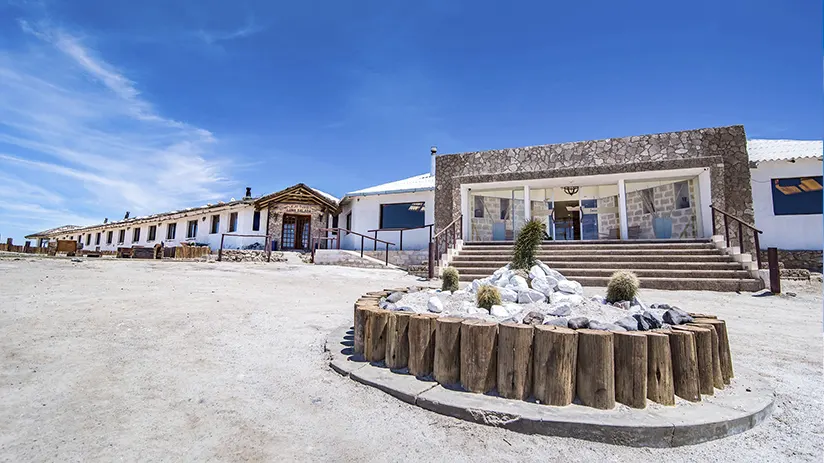
Luna Salada stands as an extraordinary testament to architectural ingenuity, crafted entirely from salt blocks. Nestled just 25 km away from the mesmerizing Uyuni Salt Flats, this remarkable hotel beckons with its cozy ambiance and uniquely styled rooms. Each corner whispers tales of salt’s transformation into luxury, inviting guests to immerse themselves in an unforgettable experience.
Useful tips
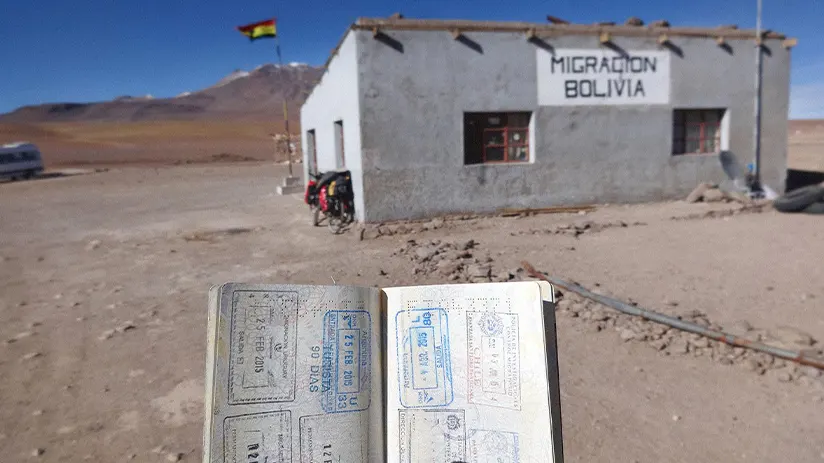
Documentation
To travel to Uyuni you need a passport if you are an international traveler, you must make sure that your passport is valid for at least 6 months from the date of entry. Also, depending on your nationality, you may require a visa to enter Bolivia (so you must anticipate this).
When arriving in Bolivia, you’ll be provided with a migration card to fill out along with presenting your passport at each immigration checkpoint. Remember to keep this card with you throughout your stay in the country. Additionally, travel insurance and vaccinations are not required, however, we recommend foreseeing any situation and considering the following insurance companies travelguard.com or inserumytrip.com. Finally, we suggest to get vaccinated against yellow fever before entering the Bolivian country.
Necessary equipment
- Clothing
Warm clothing such as coats, jackets, hats, or other warm clothing.
- Good footwear
Such as boots or trekking shoes as well as rainproof boots.
- Sunscreen and sunglasses
Protect your skin from the strong UV rays at high altitudes by wearing sunscreen with a high SPF.
Camera and accessories
Bring a camera or smartphone with a good camera to capture the stunning landscapes of the Salar de Uyuni and extra batteries and memory cards.
Personal items
Water bottle, snacks, personal medications.
LIVE LIFE WITH NO EXCUSES, TRAVEL WITH NO REGRET
We conclude our experience in the world’s largest salt flat, unable to fully capture in words all this place has to offer. Nevertheless, we can assure you that your life will never be the same from the moment you set foot on Bolivian soil. Until we meet again, the team at Machu Travel Peru awaits you for another adventure.
Peru has so much to offer, it can be hard to know where to start. With many years of experience in the tourism sector, Machu Travel Peru is happy to help with anything regarding your trip to Machu Picchu and any tours around it. Make your Machu Picchu experience an unforgettable one!
